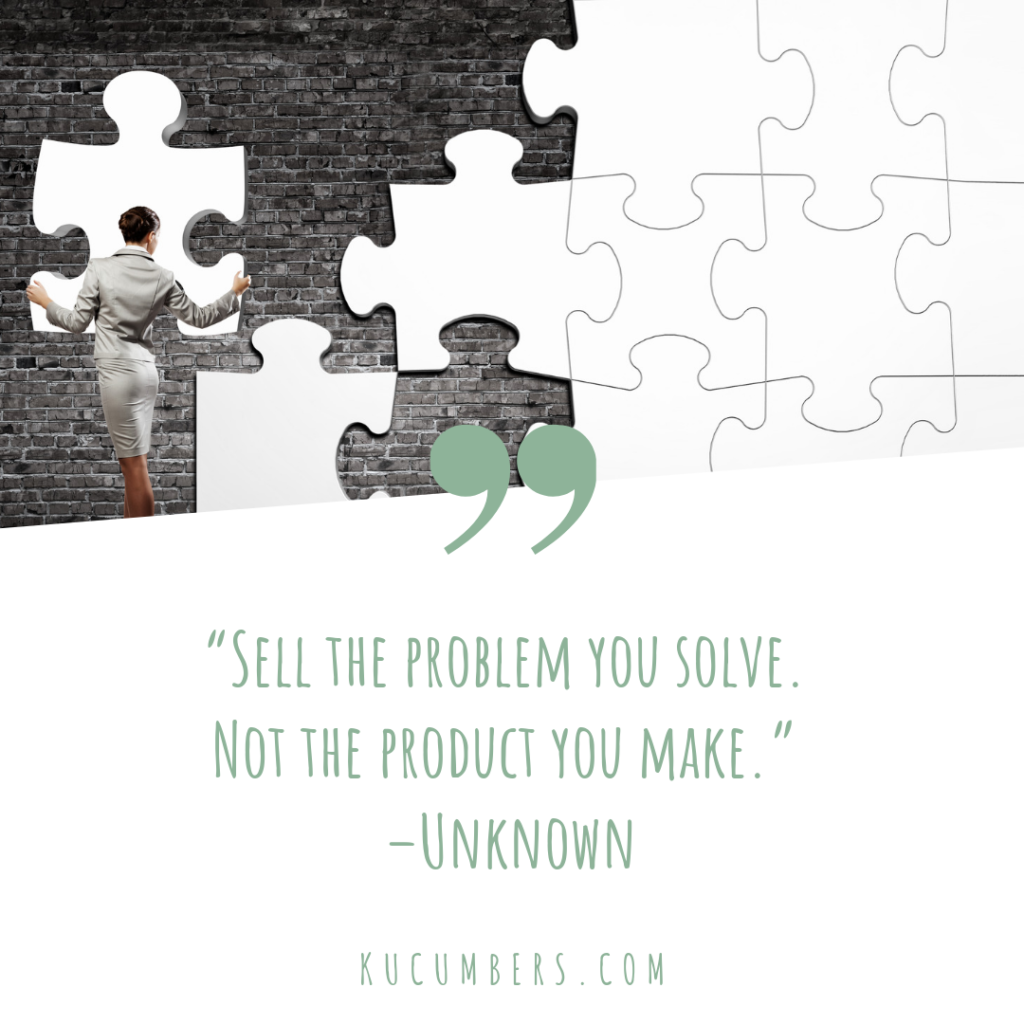
“Sell the problem you solve. Not the product you make.” –Unknown
Think for a moment about how you’ve been positioning your products or services in your marketing campaigns. Are you using a ‘features marketing’ strategy, calling out all of your product’s bells and whistles? If you are, your copy may sound like the following:
Non-stick pan!
Highly-educated dietitian!
Packed with protein!
Or, are you taking a ‘benefits marketing’ approach, appealing to your customers’ needs and emotions as to how your product or service will help them:
Never waste time scraping a pan in the sink again!
You can count on me to answer all of your nutrition questions and provide sound guidance!
Packed with protein to curb your afternoon hunger!
The difference between touting a product’s features versus benefits can be slight. But the impact upon your end customers is mighty! Put yourself in your ideal customer’s place – would you rather hear about all of the fancy features of your product, or would you instead want to know more how much better your life will be with your product in it? I would venture a guess at the latter!
A Time and Place for Features-Based Marketing
That’s not to say that you can’t ever employ features-based marketing. If you have a new cookware line that has a unique selling point that sets it apart from the rest, by all means, tell us what that is! But be sure to mix up your campaign and infuse benefits-based marketing in your messaging as well. Explain how those shiny features will make your shoppers’ lives better, will help them grow, etc. Don’t leave your potential customer hanging and left to guess at how these features will improve their lives.
Benefits of Benefits-Based Marketing
Benefits-based marketing addresses the fact that a consumer will rarely buy ‘just to buy.’ He/she instead will buy to solve a problem. Therefore, you must first identify the problem that you will solve for your customer. Will your product or service save customers time? Will it help them feel better about their body image? Will it provide necessary, replenishing, flavorful and hydrating electrolytes after a spin class?
RD2RD.com (a client of mine) has written many a post on the importance of offering a solution to a problem, and making sure that before you even create a product, you create a solution to a problem. RD2RD.com owner, Megan Boitano, shares: “The beauty of this step is…[that it] requires that you spend time studying the people that you plan to sell your product to. What are their common complaints? What types of solutions are they already asking for? By focusing on the problem, you can hear loud and clear what people already want. It isn’t necessary to create a novel or brilliant product. You simply need to create something that solves a problem – ideally what is already being asked for.”
Benefits-based marketing will also appeal to your consumers’ emotions and aspirations. When you bring emotions into the marketing mix, your messages are much more likely to resonate with your ideal audience instead of fall flat. Evoking emotions allows you to connect and engage as a brand. Sharing the benefits of your product and services leave your customers feeling connected, heard, enthused, understood, empowered!
Reach out to KUcumbers for benefits-driven marketing support!
Comment below – how are you employing benefits-based marketing for your product or service?

